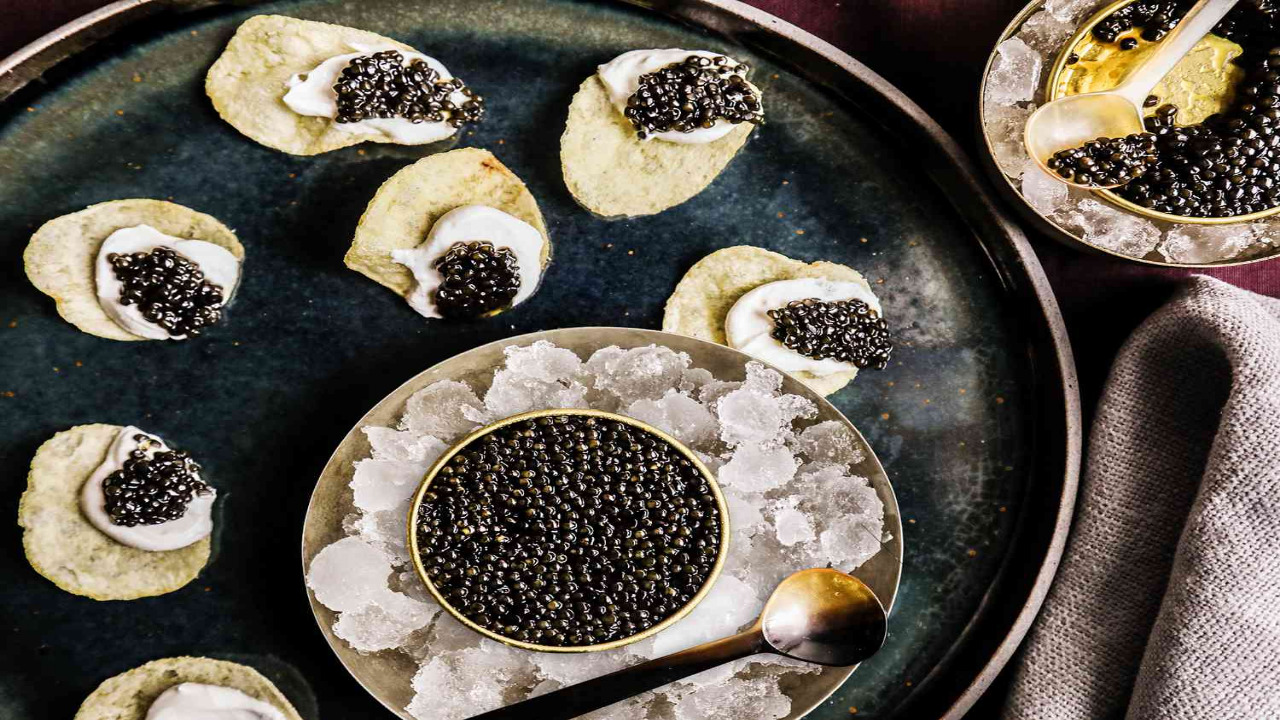Caviar, often associated with luxury and sophistication, has a long-standing history as a delicacy cherished by many. Its unique texture and flavor profile have made it a sought-after culinary delight. But can you eat caviar directly, or is it meant to be used as a garnish or ingredient in specific dishes, just like types of shrimp varieties? In this article, we will explore the nuances of consuming caviar and provide insights into the best ways to enjoy this exquisite treat.
Understanding Caviar

Caviar refers to the salted eggs of sturgeon, a prehistoric fish that inhabits various regions around the world. These eggs are processed and preserved, resulting in the distinctive small, glossy beads that are characteristic of caviar. The flavor of caviar can range from subtly briny to rich and buttery, depending on the type of sturgeon and its origin.
Culinary Delicacy or Garnish?
Traditionally, caviar has been regarded as a luxury item and has been used to elevate dishes to new heights of taste and presentation. Its delicate flavor and elegant appearance make it an excellent garnish for appetizers, main courses, and even desserts. However, the question remains: can you eat caviar directly, without pairing it with other ingredients?
Direct Consumption of Caviar
Yes, you can absolutely enjoy caviar on its own. Many connoisseurs savor the pure essence of caviar by indulging in its unadulterated form. When eaten directly, the eggs burst on your palate, releasing their unique flavors and textures. This method allows you to fully appreciate the nuances of the caviar’s taste profile, making it a delightful experience for those who relish its subtleties.
Traditional Pairings
While eating caviar directly is a valid choice, pairing it with the right accompaniments can enhance the overall dining experience. Traditional pairings include blinis (small pancakes), toast points, crème fraîche, and minced onions. These elements complement the caviar’s flavors and textures, creating a harmonious blend of tastes that dance on your tongue.
Etiquette and Enjoyment

When consuming caviar, there are a few etiquette guidelines to keep in mind. Use a non-metallic spoon, such as one made of mother-of-pearl or bone, to prevent any metallic aftertaste that might alter the caviar’s flavor. Gently scoop a small amount of caviar and let it rest on your palate, allowing the flavors to develop before swallowing. Sipping champagne or a crisp white wine can also enhance the experience.
Cooked Dishes with Caviar
Caviar’s versatility extends beyond raw consumption. Chefs around the world have embraced its potential in cooked dishes. Pasta, omelets, and seafood dishes can be elevated by the addition of caviar. The gentle cooking process allows the eggs to retain some of their character while imparting a luxurious touch to the dish.
Storage and Freshness
To fully enjoy caviar, proper storage and freshness are crucial. Store caviar in its original packaging or in an airtight container, placed in the coldest part of your refrigerator. Consume it within a few days of opening to ensure optimal taste and quality. Freshness is key to experiencing the nuanced flavors that caviar has to offer.
Conclusion
In conclusion, the answer is a resounding yes – you can indeed eat caviar directly. Whether relishing its unadorned essence or pairing it thoughtfully with complementary ingredients, caviar presents a world of culinary exploration. Its unique texture, flavor, and cultural significance make it a delicacy that continues to captivate the senses of those fortunate enough to partake in its splendor. So, go ahead, embrace the allure of caviar and embark on a journey of gastronomic delight.